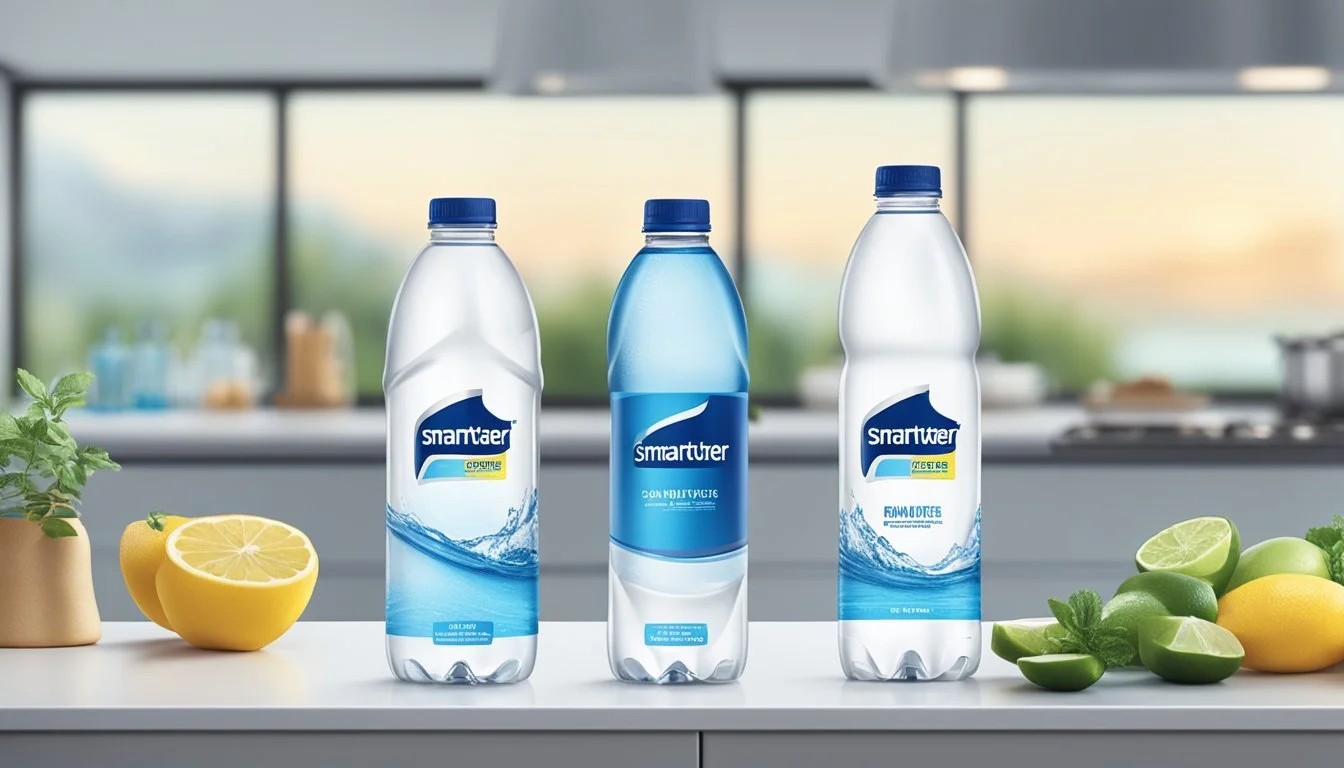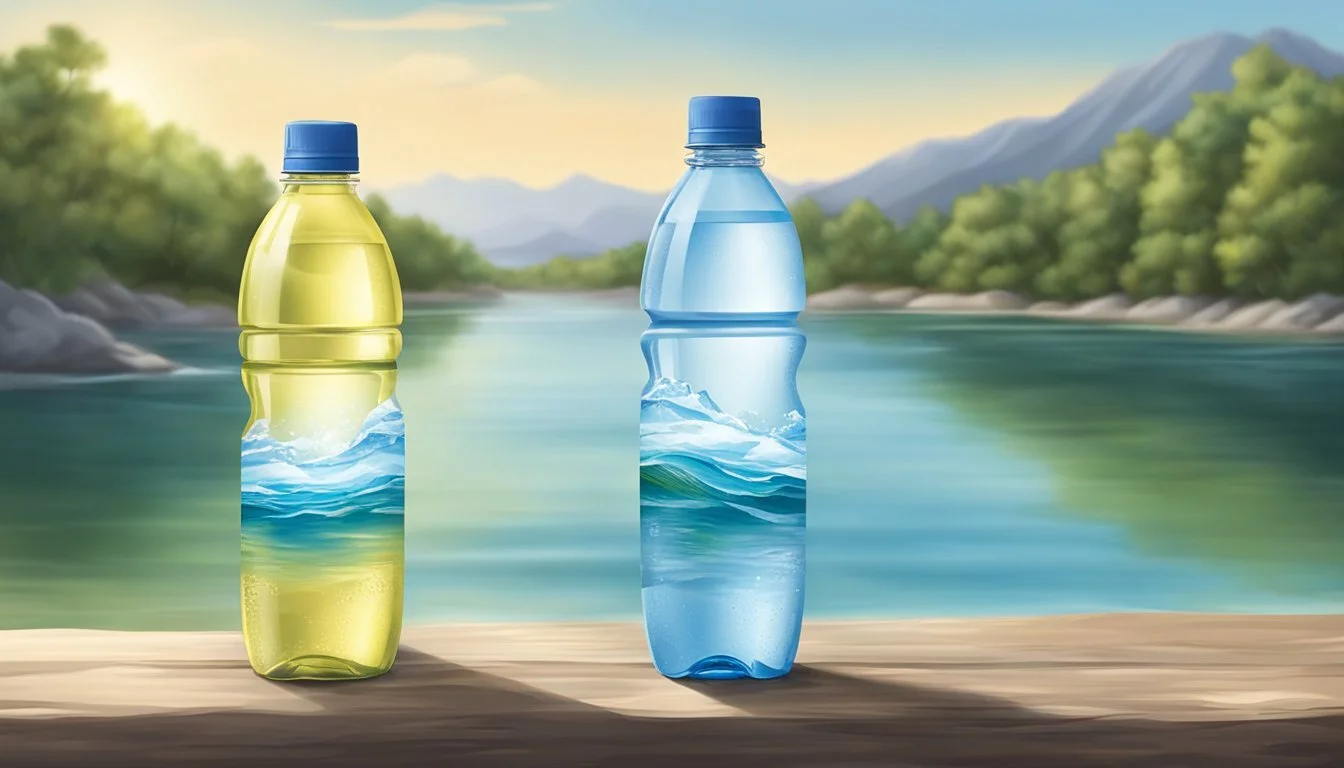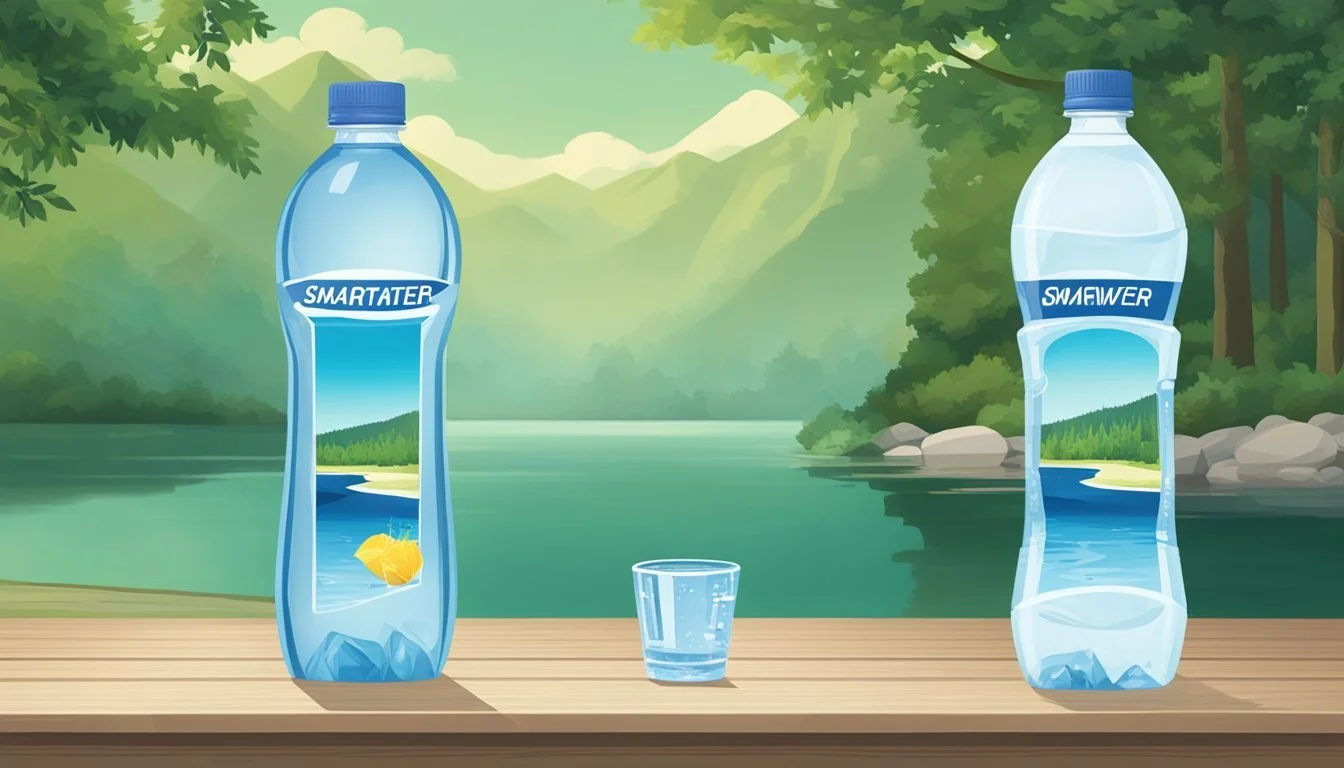Smartwater vs. Open Water
Best Choice for Your Hydration Needs
Choosing the right bottled water can be a daunting task with so many options available. Two popular choices on the market are Smartwater and Open Water, each with its unique selling points. Smartwater is known for its vapor-distilled process and added electrolytes, offering a clean, crisp taste. On the other hand, Open Water stands out for its eco-friendly packaging and commitment to sustainability, packaged in 100% recyclable aluminum bottles.
When it comes to health benefits, Smartwater offers the advantage of being free from impurities due to its advanced filtration process. For those concerned with environmental impact, Open Water is a clear winner, offering a sustainable choice without compromising on quality. The balance between purity and sustainability makes this comparison interesting for consumers who prioritize both health and the environment.
Factors such as convenience, taste, and personal lifestyle needs can influence the final decision. Understanding the composition, benefits, and environmental impact of each brand can help consumers make an informed choice between Smartwater and Open Water.
What Is Bottled Water?
Bottled water is water that is packaged in plastic or glass bottles for consumption. It can originate from various sources, including natural springs and municipal supplies.
Types of Bottled Water:
Spring Water: Sourced from underground formations where water flows naturally to the surface. It undergoes minimal processing.
Mineral Water: Contains naturally occurring minerals without any additions. It is often bottled at the source and comes in both still and sparkling forms.
Distilled Water: Produced by boiling water and then condensing the steam back into liquid. This process removes impurities and minerals.
Purified Water: Undergoes extensive filtration and purification, including methods like reverse osmosis. This ensures a high level of purity by removing contaminants like chlorine and bacteria.
Purification and Filtration
Bottled water often undergoes reverse osmosis, a process that forces water through a semi-permeable membrane to remove dissolved solids.
Other methods include carbon filtration and ozonation, which help eliminate organic compounds and pathogens.
Choosing bottled water depends on factors such as source, taste, and mineral content. Labels often provide information on the water's source and purification methods.
Understanding Smartwater
Smartwater is a popular bottled water brand known for its vapor-distilled production process and the addition of electrolytes for taste. Below, we explore its production process, ingredients, and the potential health benefits it offers.
Production Process
Smartwater undergoes a vapor-distillation process, designed to mimic the natural hydrologic cycle. In this method, water is heated until it becomes steam. This steam is then collected and condensed back into liquid form.
This process effectively removes impurities, resulting in a cleaner, crisper taste. By replicating the natural process of evaporation and condensation, Smartwater aims to offer a purer form of water compared to typical bottled options.
Ingredients and Additives
One of the distinguishing features of Smartwater is its addition of electrolytes for taste. The electrolytes include calcium chloride, magnesium chloride, and potassium bicarbonate. These ingredients are added after the vapor-distillation process.
While the primary purpose of these electrolytes is to enhance taste, they also contribute to the mouthfeel, making the water taste smoother compared to regular tap water. It is important to note that the levels of these electrolytes are relatively low.
Nutrition and Health Benefits
From a nutritional standpoint, Smartwater is calorie-free and contains no sugars, artificial flavors, or colors. The added electrolytes do not significantly alter its nutritional profile but enhance its taste.
In terms of health benefits, Smartwater does not offer significant advantages over regular water. Its main advantages lie in its purification process and taste improvements. While some claims suggest improved hydration, these benefits are largely subjective and may vary from person to person.
A Deep Dive into Open Water
Open Water stands out in the crowded bottled water market by emphasizing quality and sustainability.
Source and Filtration Methods
Open Water sources its water from pristine locations to ensure high quality. This water undergoes a rigorous filtration process that includes reverse osmosis, ultraviolet light, and ozone treatment. These methods eliminate impurities and contaminants, resulting in clean, crisp-tasting water.
The company also takes pride in its low TDS (Total Dissolved Solids) levels, making the water not only pure but also refreshing. The meticulous filtration ensures the water maintains a neutral pH, which is close to the body's natural levels, at around 7.4.
Environmental Commitment
Open Water takes its environmental responsibilities seriously. The company employs BPA-free aluminum bottles rather than plastic, significantly reducing the environmental footprint. Aluminum is not only recyclable but can also be reused multiple times without degrading in quality.
Additionally, Open Water supports ocean cleanup initiatives and advocates for reduced single-use plastic consumption. These efforts position the brand as a leader in sustainability within the bottled water industry. Their packaging choices and environmental advocacy create a compelling choice for eco-conscious consumers.
Comparing Taste Profiles
Smartwater and Open Water present distinct taste profiles influenced by their unique processing methods and ingredients.
Smartwater, produced by Coca-Cola, is known for its clean, crisp taste. The brand uses a process of vapor distillation, after which it adds electrolytes like calcium chloride and magnesium sulfate. The result is a smooth, pure taste without any artificial flavors.
Open Water, on the other hand, offers a taste grounded in its commitment to sustainability. Packaged in aluminum bottles or cans, Open Water is free of natural flavors and artificial flavors, yielding a very neutral taste profile that's comparable to Aquafina or other purist brands.
In taste tests, Smartwater often stands out for its slightly enhanced flavor due to the added electrolytes, making it appealing to those who prefer a subtle hint of minerals. Open Water's neutrality appeals to purists who prefer their water to taste as close to natural as possible.
Taste Comparison Table:
Brand Taste Description Enhancements Smartwater Clean, crisp, smooth Electrolytes (natural) Open Water Neutral, pure None
Consumers who prefer a distinct, slightly mineralized taste may lean towards Smartwater. Those seeking a pristine, unadulterated water flavor might opt for Open Water.
Using two iconic examples, the difference is stark yet nuanced. Smartwater exemplifies the benefits of modern distillation techniques combined with a touch of electrolytes. Conversely, Open Water highlights an unembellished approach, focusing purely on water's base taste without additional enhancements.
Health Implications and Benefits
The health implications and benefits of both Smartwater and Open Water revolve around their hydration capabilities, mineral content, and safety standards. It's essential to compare these factors to understand which option is better for maintaining overall well-being.
Regulation and Safety Standards
Both Smartwater and Open Water are subject to FDA regulations ensuring they meet safety standards. Smartwater goes through a rigorous purification process, adding electrolytes for taste such as potassium, calcium, and magnesium, aiming to enhance hydration.
Open Water, often marketed for its eco-friendly packaging, also adheres to strict safety protocols.
While tap water's safety can vary, bottled water like Smartwater and Open Water is consistently monitored for harmful substances such as metals or chemicals.
Maintaining a weak immune system necessitates choosing bottled water to avoid contaminants often found in tap water while on the go or in uncertain environments.
Comparative Analysis of Environmental Impact
Smartwater and Open Water differ significantly in their environmental impact, particularly concerning plastic usage and sustainability efforts.
Smartwater typically uses plastic bottles for its packaging. This choice contributes to plastic waste, a major environmental issue. While many Smartwater bottles are recyclable, the reality is that a significant portion of plastic waste does not get recycled, adding to environmental pollution.
Open Water focuses on sustainability by using aluminum bottles instead of plastic. Aluminum is more recyclable than plastic and can be recycled indefinitely. This choice reduces plastic waste, making Open Water a more environmentally friendly option in terms of packaging.
Production processes of bottled water also differ:
Plastic Bottles (Smartwater)
Production emits greenhouse gases.
Recycling rates are lower.
Creates long-term waste.
Aluminum Bottles (Open Water)
More energy-intensive production but higher recycling rates.
Reduced environmental footprint over the long term.
Aluminum can be recycled multiple times without losing quality.
In addition to packaging, the overall carbon footprint of transporting bottled water must be considered. Both brands transport bottles, but different materials have distinct implications for transportation emissions. Aluminum is lighter than glass but heavier than plastic, which may influence transport efficiency.
Key Points:
Smartwater: Predominantly plastic bottles, lower recycling rates, significant plastic waste.
Open Water: Aluminum bottles, higher recycling rates, reduced plastic pollution.
Both brands offer hydration, but Open Water’s use of aluminum presents a more sustainable path to minimizing environmental impact.
Contaminants and Purity Levels
When comparing Smartwater and Open Water, examining contaminants and purity levels is essential.
Impurities: Both brands claim to offer high-purity water. Open Water undergoes rigorous purification processes, including reverse osmosis, to remove impurities. Smartwater uses a vapor distillation process to ensure purity.
PFAS Chemicals: Consumer Reports has found PFAS chemicals in various bottled water brands. It’s crucial to check updated test results for both Smartwater and Open Water to confirm the absence of these harmful substances.
Heavy Metals: Neither brand lists specific levels of heavy metals like lead, mercury, or arsenic. It's important to review third-party testing results to ensure neither water source is contaminated.
Total Dissolved Solids (TDS): Total Dissolved Solids indicate the concentration of dissolved substances in water. Smartwater typically has a TDS level under 10 ppm due to vapor distillation. Open Water, known for its aluminum packaging, also boasts low TDS levels, signifying high purity.
Mercury and Lead: These toxic metals are dangerous, even in small amounts. Both Smartwater and Open Water aim to eliminate these contaminants through their advanced purification methods, though specific concentration levels should be confirmed through independent testing.
Arsenic: Arsenic contamination is a serious concern for drinking water. While there’s no evidence suggesting significant levels of arsenic in either Smartwater or Open Water, regular testing for these substances is crucial for maintaining safety.
In sum, both Smartwater and Open Water employ advanced purification techniques to ensure their water remains as free from contaminants as possible. Continuous monitoring and testing are vital to maintaining these high standards.
Market and Consumer Behaviors
Understanding the market dynamics and consumer preferences helps illustrate why Smartwater and Open Water have found their niches. Each brand leverages its strengths to cater to distinct demographics, impacting their market influence and pricing strategies.
Brand Influence
Smartwater, a product of Coca-Cola, benefits from its parent company's extensive distribution network and marketing power.
Smartwater's branding focuses on purity and hydration, appealing to health-conscious consumers. By promoting its vapor-distilled process and electrolyte addition, it distinguishes itself from other competitors like Dasani and Aquafina.
Open Water, on the other hand, markets itself as an environmentally friendly option. Packaged in aluminum bottles to reduce plastic waste, it resonates with eco-conscious consumers. This unique positioning sets it apart from traditional bottled waters.
Cost and Availability
Smartwater generally commands a higher price due to its premium positioning. Consumers are willing to pay for perceived quality and the additional benefits advertised. Coca-Cola's widespread distribution channel ensures Smartwater is readily available in supermarkets, convenience stores, and online.
Open Water, with its focus on sustainability, opts for packaging that incurs higher production costs.
This can lead to a slight price premium, which eco-conscious consumers are often willing to pay. Its availability may be more limited compared to mainstream brands like Dasani and Aquafina, often found in health food stores and specialty retailers.
Tap water remains the most economical and widely accessible option, often compared to bottled water in terms of cost and convenience. Still, factors like perceived purity and branding significantly influence consumer choice in favor of branded bottled waters.
Innovation and Future Directions
In the evolving domain of bottled water, innovations range from enhanced water and functional beverages to advanced purification technologies. These developments aim to offer consumers not only superior hydration but also added health benefits and environmentally friendly choices.
Enhanced Water and Functional Beverages
Enhanced water and functional beverages have become prominent in the bottled water industry. Alkaline water and sports drinks provide specific benefits such as balanced pH and electrolyte replenishment. Smartwater Alkaline is a notable example, offering ionized water with a higher pH.
Other brands are incorporating additives like vitamins, minerals, and antioxidants. These ingredients aim to improve physical performance, support immune health, and enhance overall well-being. Consumers increasingly seek this value-added approach to hydration, valuing both convenience and enhanced health benefits.
Emerging Technologies in Water Purification
Emerging technologies in water purification focus on advanced methods like vapor distillation and ionization. Vapor distillation is used by Smartwater, ensuring impurities are removed through evaporation and condensation, which results in cleaner water.
Breakthroughs in ionization and other purification techniques are also shaping future directions. These innovations promise to increase water purity while being energy-efficient. Environmental sustainability is another key factor, with companies exploring ways to reduce plastic use and adopt eco-friendly packaging solutions.
Overall, these advancements reflect a commitment to providing purer, healthier bottled water while addressing environmental concerns.
More About Smartwater
Core Hydration vs Smartwater: Which Bottled Water is Better?
Icelandic Glacial vs Smartwater: Which Bottled Water is Better?
Mountain Valley Spring Water vs Smartwater: Which Bottled Water is Better?
Nestle Pure Life vs Smartwater: Which Bottled Water is Better?
San Pellegrino vs Smartwater: Which Bottled Water is Better?
Smartwater vs Aqua Carpatica: Which Bottled Water is Better?
Smartwater vs Cascade Mountain: Which Bottled Water is Better?
Smartwater vs Crystal Geyser: Which Bottled Water is Better?
Smartwater vs Hawaii Volcanic: Which Bottled Water is Better?
Smartwater vs Hawaiian Springs: Which Bottled Water is Better?
Smartwater vs Kirkland Signature: Which Bottled Water is Better?
Smartwater vs Richard's Rainwater: Which Bottled Water is Better?
Smartwater vs Solan de Cabras: Which Bottled Water is Better?
Smartwater vs Talking Rain AQA: Which Bottled Water is Better?
Smartwater vs Whole Foods 365: Which Bottled Water is Better?
Smartwater vs Whole Foods Italian Still Mineral water: Which Bottled Water is Better?
More About Open Water
Aqua Carpatica vs Open Water: Which Bottled Water is Better?
Cascade Mountain vs Open Water: Which Bottled Water is Better?
Core Hydration vs Open Water: Which Bottled Water is Better?
Crystal Geyser vs Open Water: Which Bottled Water is Better?
Hawaii Volcanic vs Open Water: Which Bottled Water is Better?
Hawaiian Springs vs Open Water: Which Bottled Water is Better?
Icelandic Glacial vs Open Water: Which Bottled Water is Better?
Mountain Valley Spring Water vs Open Water: Which Bottled Water is Better?
Nestle Pure Life vs Open Water: Which Bottled Water is Better?
Open Water vs Kirkland Signature: Which Bottled Water is Better?
Open Water vs Whole Foods 365: Which Bottled Water is Better?
Richard's Rainwater vs Open Water: Which Bottled Water is Better?
San Pellegrino vs Open Water: Which Bottled Water is Better?
Solan de Cabras vs Open Water: Which Bottled Water is Better?
Talking Rain AQA vs Open Water: Which Bottled Water is Better?
Whole Foods Italian Still Mineral water vs Open Water: Which Bottled Water is Better?








